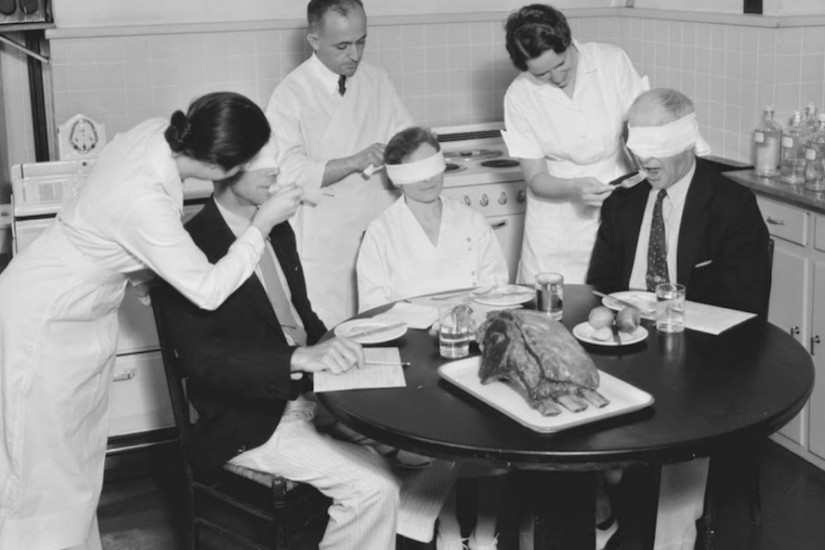Lucy Alexander boasted one of the strangest jobs on the federal payroll. Her official title was the innocuous “chief poultry cook” for the Bureau of Home Economics, a division of the United States Department of Agriculture, and Alexander was a veteran of the government taste testing landscape. Throughout the 1920s and 1930s, she ate thousands of pieces of meat from various breeds as part of a program to bring overlooked agricultural goods into the American diet. By 1931, according to the Chicago Daily Tribune, Alexander had "tasted and tested the left hind legs of more than 2,300 lambs."
The tests were designed to sleuth out the tastiest versions of meats or crops that were raised at far higher rates than they were consumed. In addition to testing whether characteristics like age or breed impacted the taste of an animal, Alexander and her assistant cooked the meats using a variety of methods—roasting, frying, boiling, or braising—to see which was the most appealing. She and her team raised the animals themselves at a network of 25 USDA “experiment stations” set up across the country, often offering them specialized feed to see how it affected their flavor. Alexander then relayed her findings to the farmers themselves, so they could then adjust how they raised their crops or livestock.
At the time, U.S. agriculture was diverse and unwieldy. Today the agricultural system centers around a few heavily subsidized crops. Farmers at the turn of the 20th century grew all sorts of crops and raised many different livestock without much attention paid to the consumer marketplace. Lamb, for instance, wasn’t very popular, even though many farmers raised them largely because their families had historically done so. Alexander’s job was to coordinate with farmers to create a market for their unpopular meats. If her testers found that younger lambs tasted better than their older counterparts, then the Bureau of Home Economics would in theory tell farmers to wait those extra months before putting their product on the market.
That drive to smooth out the farm-to-table pipeline stemmed from a larger desire, as Megan Elias, a professor of gastronomy at Boston University, puts it, “to make American agriculture the most advanced in the world.”
“There was a big imperative that the U.S. government and all state governments had to improve farming, to suggest crops, to suggest foods,” says Elias, who wrote about the Bureau of Home Economics in her book Stir It Up.
